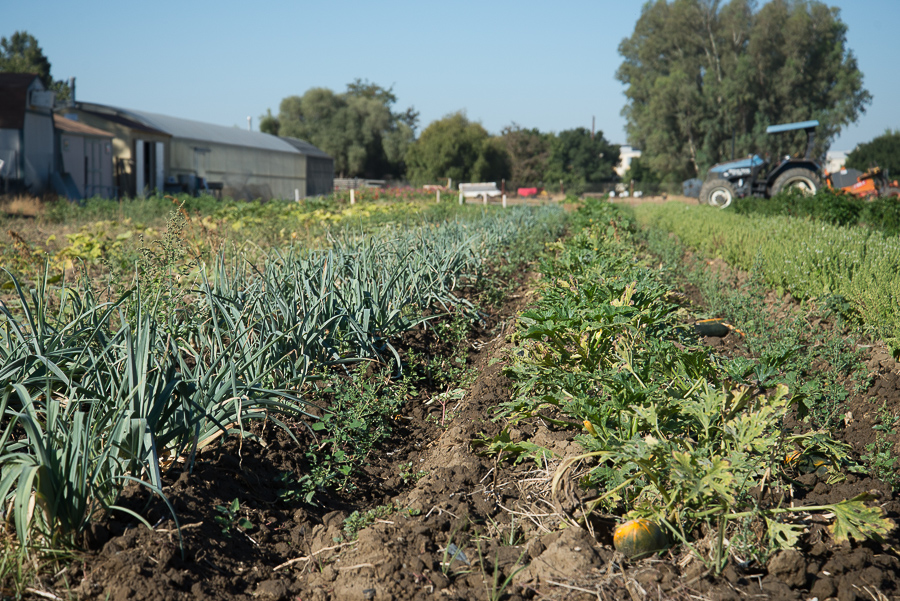
The future of agriculture is in arts and humanities

A recent KQED Radio forum on the topic of the graying, demographically homogenous agricultural industry discusses possible ways to rejuvenate the $37 billion industry employing 800,000 Californians. The general consensus among featured guests, who are all farmers, is that in order to save the industry from operational problems, pursuing a fruitful future means looking to the next generation. Investing in the youth is not a novel idea, but rather a tried and true ideology that still holds as a fundamental building block of our society’s functionality: looking for novelty in the innovation of young, curious minds always seeking the best solution.
The way today’s youth is revolutionizing the parameters of agriculture is complex. As the American landscape continuously progresses toward industrial urbanization, the challenge for farmers is thinking about agriculture in a metropolitan context. What does agriculture look like in populous cities and towns, and how are the youth in these areas engaging with agriculture? One historically ag-centered youth organization, 4-H, has begun to contemplate this idea and implement ways in which the general public can get involved in the “revolution for responsibility” in terms of how our food, fiber and pharmaceuticals are produced.
One way California 4-H traditionally upholds its youth engagement and education is through its annual State Field Day. This day-long event features the work that members from various county 4-H chapters across the state have accomplished throughout the year. There’s a lot of emphasis on advocacy among these young agriculturists and on the power of finding new ways to inform people about agricultural issues.
Communication, to my pleasant surprise, was a recurring theme throughout the day. Communication about agriculture and its science is just as important as conventional farming — if not more so — for industry innovation and implementation in society. It’s present in the principles of the 4-H motto to prepare kids for success through leadership development and communication skills. This was subtly noticeable in the way presentations were run and more explicitly seen when youth and adult volunteers were asked to be more involved in marketing and communications in their local communities. Susan Garcia, the secretary of the California 4-H management board, noted that communication between the clubs is one of the most important elements of 4-H clubs’ success statewide. This is also an aspect that the management board is working hard to improve.
What intrigued me the most about this event was its emphasis on the marriage between agriculture and creative outlets. The future of agriculture is in the arts and humanities, as reflected in the day’s festivities: a fashion show, a film festival, presentations incorporating literature and public speaking and competitions in photography, entomology and plant identification. I overheard a girl no more than 10 years old ask one of the judges to explain what she could have done to earn a higher ranking in a photo competition, and the judge taught her on the spot about composition.
The photography contest was founded by John Trammell and was inspired by his time on the educational technology advisory committee. The committee was discussing ways to envision the future of their educational technology programs, figuring out the best ways to merge agriculture and science technology. In addition to the film festival, which teaches kids how to communicate about their projects through a creative medium, the committee decided to hold a photography contest to provide another venue for kids to showcase their skills, exemplifying 4-H’s history of adapting its programs to broader audiences, involving more and more youth as their environments and interests evolve.
Children in agriculture-related youth organizations will not necessarily pursue future careers in ag, but their careers will nevertheless be informed by the experiences they gained. Famous 4-H alumni include Carla Hall from The Chew, Julia Roberts and David Letterman, all of whom credit their 4-H membership as the pivotal foundation of their creativity and leadership skills, which they use in their careers. Having a worldview grounded in ag issues will aid these kids in their futures because they can adapt it to any career they choose. What will the future of agriculture look like? From what I’ve observed, it will look like public relations and information technology, reflecting our increasingly digital society.
Written by: Camille Chargois — cachargois@ucdavis.edu
Disclaimer: The views and opinions expressed by individual columnists belong to the columnists alone and do not necessarily indicate the views and opinions held by The California Aggie.





